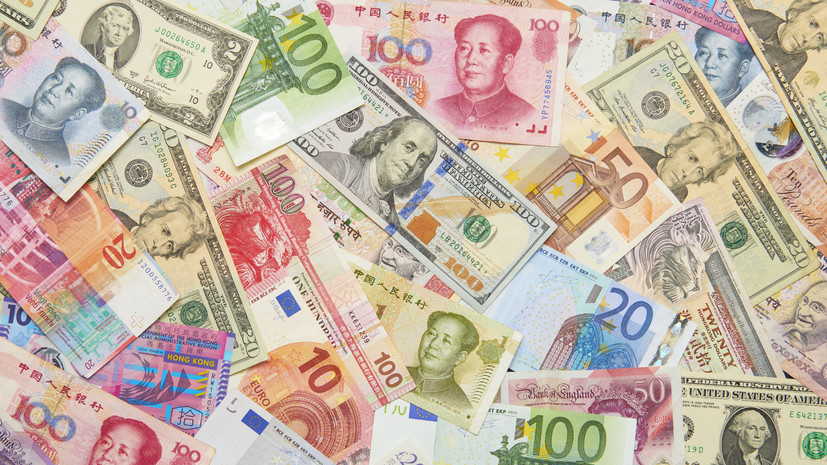On Wednesday, March 1, the Russian currency shows mixed dynamics on the Moscow Exchange.
During the opening of trading, the dollar rose by 0.04% to 75 rubles, and the yuan rose by 0.02 to 10.78 rubles.
At the same time, the euro exchange rate, on the contrary, decreased by 0.79% - to 78.82 rubles.
It should be noted that in February the value of the American currency on the Moscow Exchange increased by about 7.4%, the European one - by 4.6%, and the Chinese one - by 4.2%.
The main reason for this dynamic was a series of new economic restrictions by the West against Russia, according to experts interviewed by RT.
Against the backdrop of restrictions introduced in the last month of winter, the dollar, euro and yuan exchange rates at some point even rose to 76.49, 80.78 and 11.01 rubles, respectively - the highest levels since April 2022.
However, by the end of the month, the values nevertheless fell below 75, 80 and 11 rubles.
“The tenth package of EU anti-Russian sanctions, in our opinion, has already been taken into account by the market.
In March, new restrictions are not yet expected.
Therefore, in the near future, geopolitics and the state of the country's trade balance will be the determining factors for the ruble, ”said Mikhail Shulgin, head of the Otkritie Investments global research department, in an interview with RT.
According to experts, in March the dynamics of Russia's foreign trade usually plays in favor of the appreciation of the national currency.
At this time, the country receives more dollars, euros, yuan and other banknotes from exports than it goes to pay for imports.
Thus, an overabundance of foreign currency is formed on the market, and it begins to become cheaper against the ruble.
“In principle, the beginning of spring is considered the most favorable period for the ruble.
Over the entire history of observations, in most cases, the national currency rose in price in March, which has a fundamental justification.
In addition to the best balance of imports and exports, this month there are large tax payments from exporters and low spending on the repayment of public debt, ”said Mikhail Zeltser, an expert on the BCS World of Investments stock market, to RT.
Let us explain that in order to pay taxes to the budget, exporting companies exchange the earned currency for rubles, while the government acts the other way around when paying the public debt.
According to Mikhail Zeltser, in March the supply of dollars, euros and yuan from the business side will be increased, while the government's demand for foreign banknotes, on the contrary, will be weaker.
As a result, the surplus of foreign currency on the market may grow and thereby support the ruble.
Gettyimages.ru
© Sefa Karacan/Anadolu Agency
In addition, according to Natalya Milchakova, a leading analyst at Freedom Finance Global, the impact on stock prices will be influenced by the budget rule.
As part of this initiative, the Ministry of Finance sells currency from the National Wealth Fund to cover the costs of the treasury.
Due to the actions of the Ministry of Finance, the supply of foreign banknotes on the market is further increasing, which should have a positive effect on the ruble, the expert believes.
“Along with this, inflation dynamics in Russia will play an important role for the ruble.
In early March, Rosstat is to publish data on the February growth rate of consumer prices.
If the indicator is lower than in January, the ruble will have the opportunity for short-term strengthening.
Otherwise, the national currency may weaken, ”Milchakova added in a conversation with RT.
According to the expert, foreign exchange market participants will closely follow the decision of the Central Bank on the key rate.
The Board of Directors of the Central Bank plans to discuss this issue at a meeting on March 17.
At the moment, it is expected that the leadership of the Central Bank will keep the rate at the current level - 7.5% per annum, Milchakova said.
However, according to her, if inflation starts to accelerate again, then to combat rising prices, the regulator may raise the rate to 7.75% per annum.
Such tightening of monetary policy is usually a positive factor for the ruble, the analyst added.
Under these conditions, according to the forecast of Natalia Milchakova, in the next month the dollar exchange rate may fluctuate in the range of 70-76 rubles, the euro exchange rate in the range of 76-82 rubles, and the yuan exchange rate within 10.7-11.2 rubles.
Mikhail Shulgin adheres to similar assessments.
In turn, Mikhail Zeltser does not rule out the possibility of a correction of the indicators in March to 72, 77 and 10.5 rubles, respectively.

